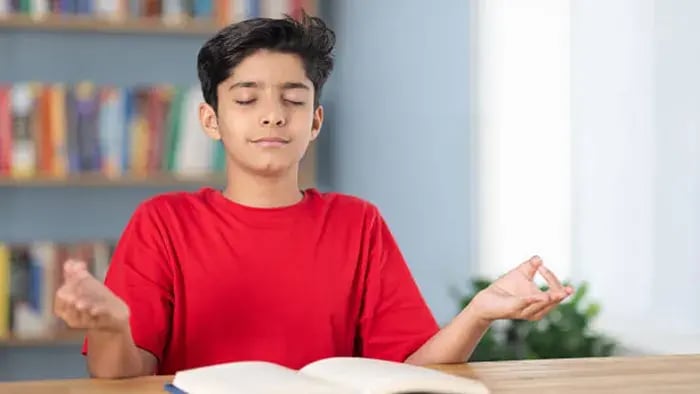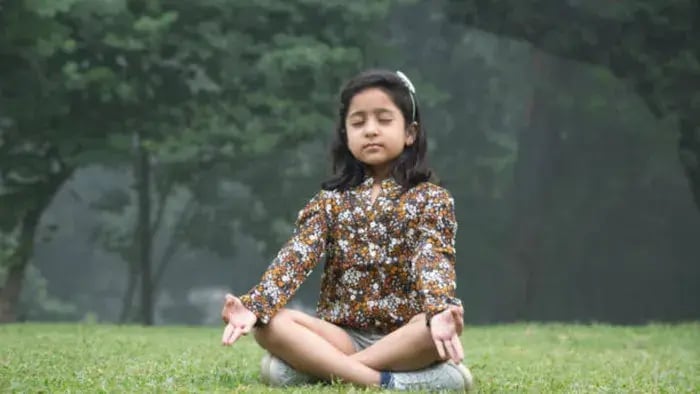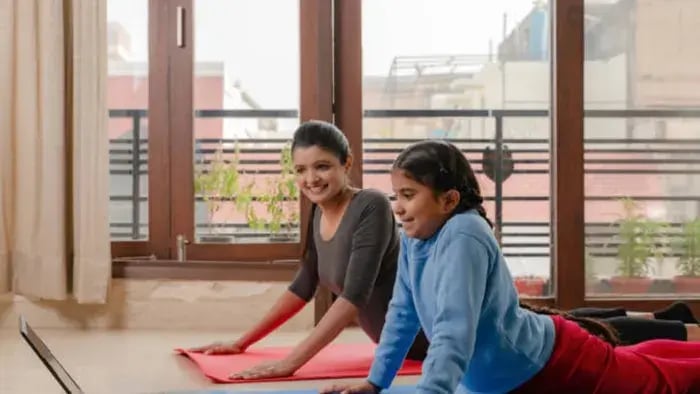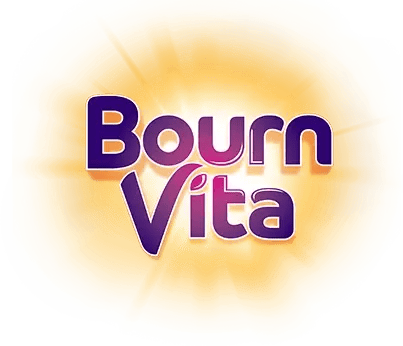- Deep Belly Breathing
- Butterfly Hugs
- Squeeze and Release
- Guided Imagery
- Body Scan
- Bubble Breathing
- Gentle Stretching
- Mind Jar Focus
- Five Senses Check-In
Introduction

After a long day of classes, screen time and social interactions, young minds often carry an invisible load. racing thoughts, tired eyes and a body that doesn’t know how to slow down. That’s where relaxation exercises come in. They create a small quiet space that resets the mind and recharges the body without any special equipment or setup.
For kids and teens, learning to unwind is a useful skill that builds focus, improves sleep and emotional balance over time. A few minutes of guided breathing, simple stretches or even mindful activities can work like a soft reset button. These small pauses are especially helpful during exams, transitions or busy weeks with too many tasks and not enough time to breathe.
Across different age groups, the ability to pause and relax can help kids develop better attention spans, respond with more patience and bounce back from stress in healthier ways. And like all good habits, it starts small, just a few minutes a day is enough to make a difference.
Here’s a list of 9 relaxation exercises you can try at home. They’re simple, age friendly and designed to help kids and teens unwind gently while reconnecting with calm.
9 Simple Relaxation Techniques Every Child Can Try

Stress doesn’t look the same in children as it does in adults. It often shows up in the form of tiredness, irritability, or difficulty concentrating. That’s why teaching kids how to relax is just as important as teaching them how to stay active. A few minutes of gentle relaxation can go a long way in improving their mood, focus, and sleep.
Here are nine easy relaxation exercises that work well at home or school. They don’t need any fancy tools—just a quiet spot, some breathing room, and your support.
Deep Belly Breathing
According to a study published in, Medicines (Basel). 2020, this technique teaches kids to take slow, deep breaths into their belly rather than shallow ones into their chest. Ask them to place a hand on their stomach and feel it rise and fall as they breathe. Just five rounds of mindful breathing can help release tension and bring instant calm.
Butterfly Hugs
According to The Ministry of Youth Affairs and Sports, this simple exercise involves crossing the arms across the chest and gently tapping each shoulder in an alternating rhythm, like butterfly wings. It’s soothing and helps kids self-regulate when they’re overwhelmed. It’s especially useful after school or before bedtime.
Squeeze and Release
Also known as progressive muscle relaxation, this involves squeezing different muscle groups, hands, arms, feet, and legs, for a few seconds and then letting go. According to UNICEF, it helps children become aware of physical tension and teaches them how to relax each area intentionally.
Guided Imagery
This is about using imagination to transport the mind to a calm place, like a beach, garden, or cloud. You can gently guide them through the experience, describing sounds, smells, and textures to create a relaxing visual escape. As per a study published in, Brain Sci. 2023, it’s a great reset during exam stress or noisy days.
Body Scan
This quiet practice involves mentally scanning the body from head to toe, noticing how each area feels. Study published in, National Academies Press 2013, it promotes awareness and helps kids reconnect with how their body is doing, especially after physical activity or long screen time.
Bubble Breathing
You can do this with real soap bubbles or just the idea of one. Ask your child to take a deep breath and blow out slowly as if blowing a big, gentle bubble. According to a study published in, Breathe (Sheff). 2017, this makes exhaling fun and encourages slower, deeper breathing.
Gentle Stretching
Study published in, Medicina (Kaunas). 2023, shows that simple stretches like touching the toes, side bends, shoulder rolls, and cat-cow stretches help release tightness and improve circulation. Try pairing each movement with a slow breath to make it more calming.
Mind Jar Focus
A mind jar is a clear jar filled with water and glitter. Shake it and watch the glitter swirl and slowly settle. It’s a visual metaphor for calming the mind. According to a study published in, Soa Chongsonyon Chongsin Uihak. 2022, this exercise works especially well for kids who respond better to visual cues.
Five Senses Check-In
This grounding technique involves noticing one thing from each sense: something you see, hear, feel, taste, and smell. As per a study published in, Healthcare (Basel). 2023, it helps kids return to the present moment and is perfect before starting homework or after an emotional outburst.
Conclusion

Relaxation doesn’t have to be complicated to be effective. With these exercises, you’re not only helping your child unwind but also teaching them lifelong skills to manage stress, anxiety, and restlessness. Whether it’s a deep breath after a tough day or a quiet moment before bedtime, each small step supports a calmer, more confident child.
Her love for storytelling began with reading her grandfather’s speeches, where Tarishi saw the power of words in creating lasting memories. Combining her passions for food and writing, she has turned her life into a fulfilling path of sharing stories that celebrate flavours and how food brings communities together.
The views expressed are that of the expert alone.
The information provided in this content is for informational purposes only and should not be considered a substitute for professional medical advice, diagnosis, or treatment. Always seek the advice of your physician or another qualified healthcare provider before making any significant changes to your diet, exercise, or medication routines.
References
https://pmc.ncbi.nlm.nih.gov/articles/PMC10298416/
https://pmc.ncbi.nlm.nih.gov/articles/PMC8733412/
https://pmc.ncbi.nlm.nih.gov/articles/PMC10222752/
https://pmc.ncbi.nlm.nih.gov/articles/PMC5709795/
https://www.ncbi.nlm.nih.gov/books/NBK201497/
















